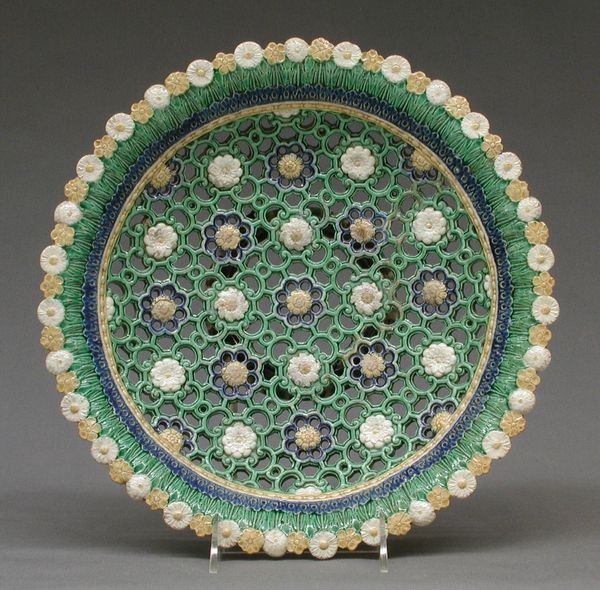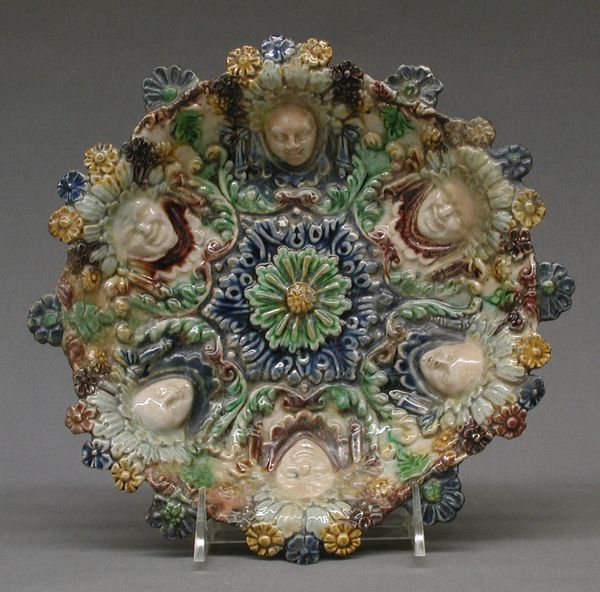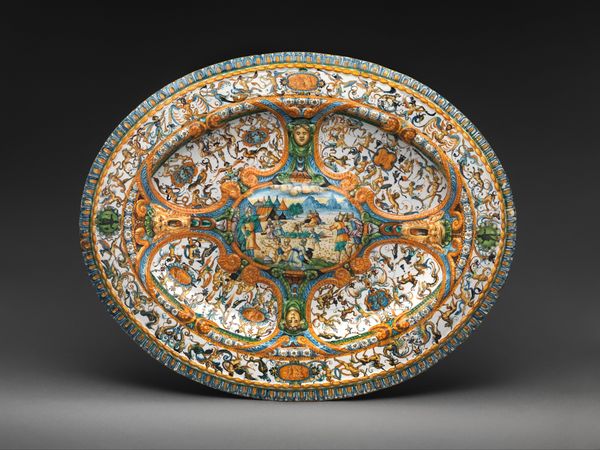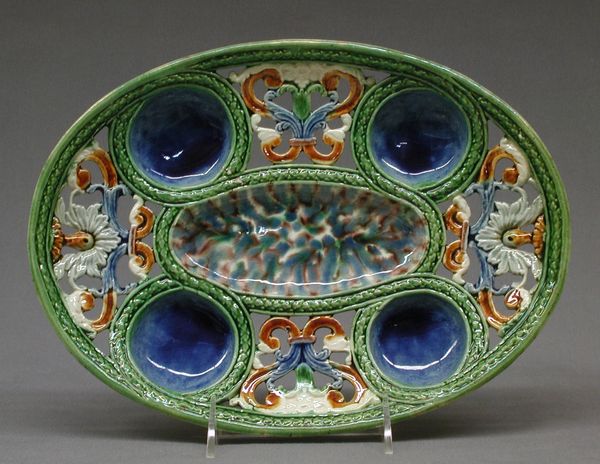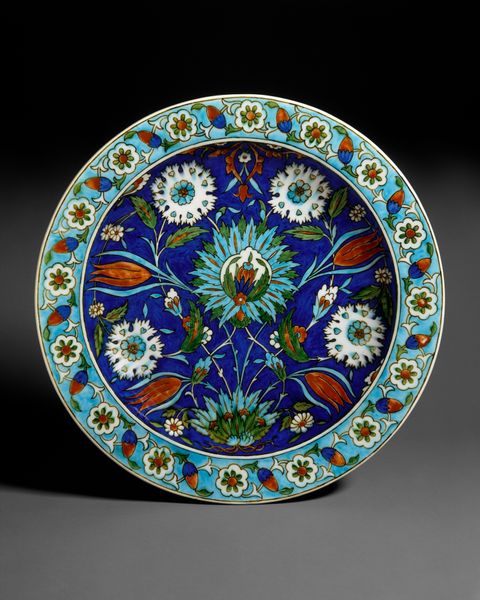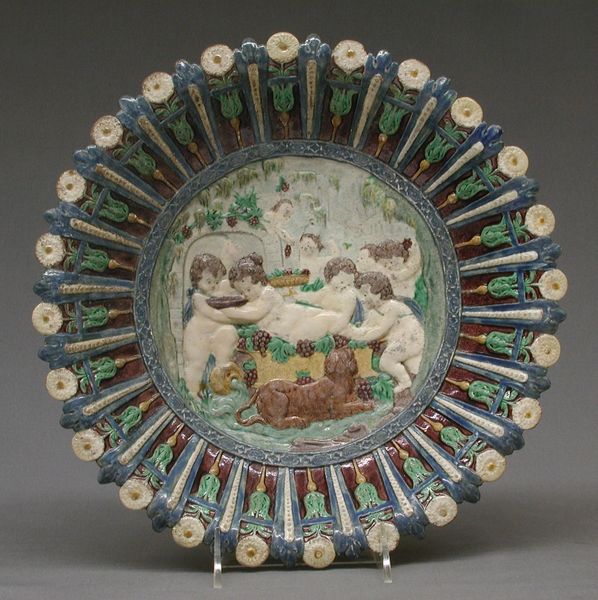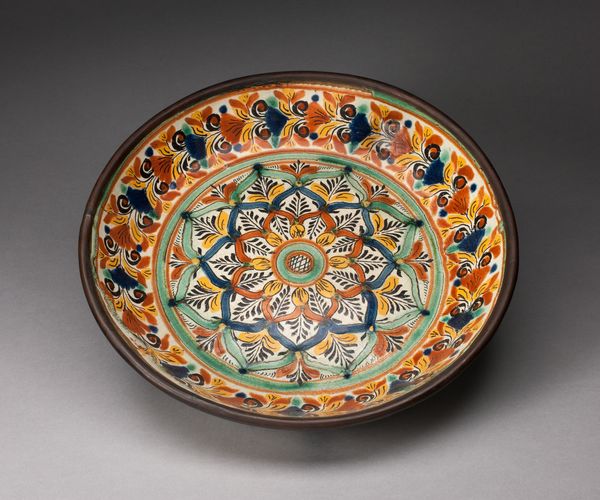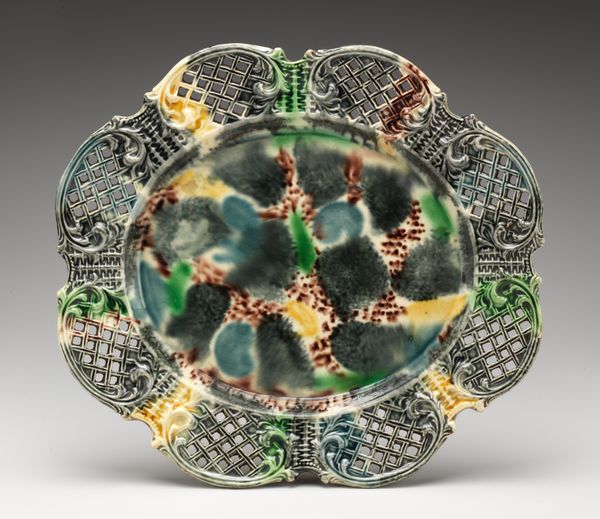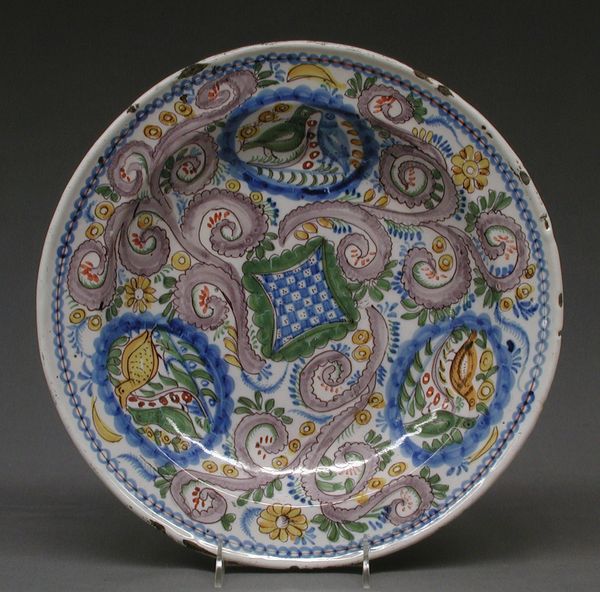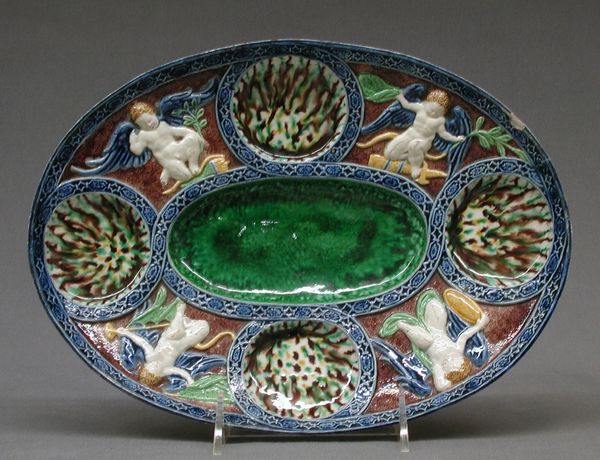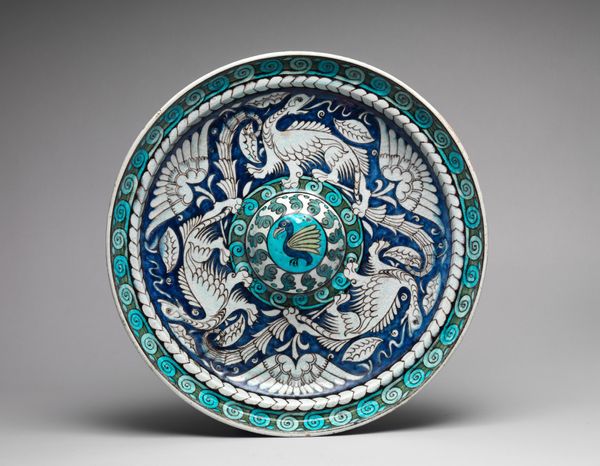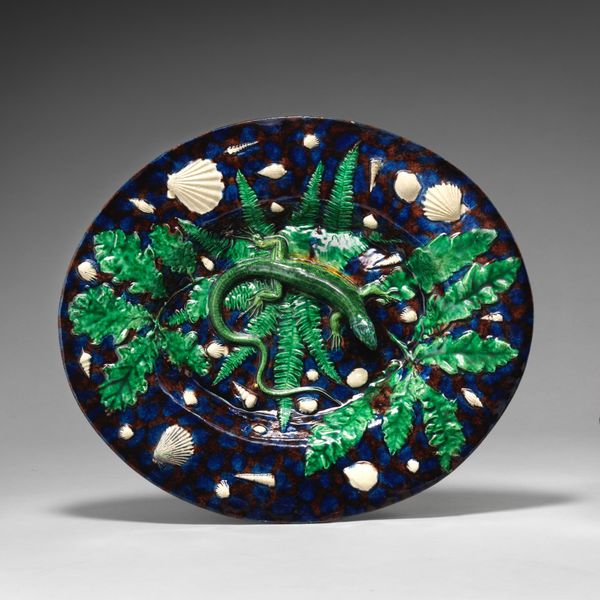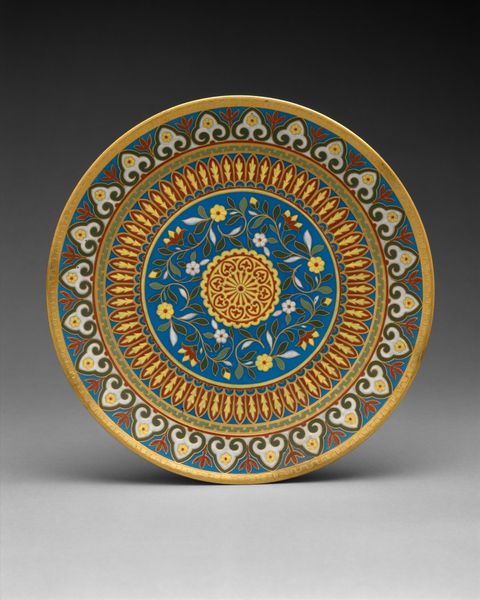
ceramic, earthenware, sculpture
#
ceramic
#
11_renaissance
#
earthenware
#
sculpture
Dimensions: Overall (confirmed): 2 3/16 x 10 1/4 x 10 3/16 in. (5.6 x 26 x 25.9 cm)
Copyright: Public Domain
Curator: Take a look at this stunning earthenware piece known simply as "Dish," a creation attributed to Bernard Palissy dating back to the 19th century. It’s currently housed here at The Met. Editor: It's... unexpectedly delicate for a dish! The intricate, almost lace-like structure is so unlike what one expects. It's quite striking visually. Curator: Striking indeed. What interests me most is the process, and its connection to labour and craft. Think of the social conditions in the 19th century and Palissy's workshops, the labor divisions needed to produce such a work. These artisanal ceramics blurred lines between art and industrial practice, opening considerations for craft’s cultural place. Editor: Absolutely, the act of its making carries importance. The overall circular structure and open design work, together producing this intriguing play of negative and positive spaces and also guiding my eyes between various details. Observe, for example, how each facial detail is carefully rendered; a subtle realism with semiotic and ornamental implications that is, well, compelling. Curator: The materiality itself presents fascinating challenges. Bernard Palissy was very influential in using his style within mass production. Do you find a challenge in looking at an item intended for luxury and aristocracy now on display inside the context of a museum for the broader public? Editor: Definitely something to think about. The medium certainly dictated part of its expressive form— the choice of white earthenware against darker colors serves an interesting formal tension; it emphasizes shadows which defines depth to the piece—this chromatic game works harmoniously well. Curator: Indeed. And that leads me to reflect on consumption as well; the "Dish" as a statement on bourgeois identity and how access to artisanal goods can function as an enactment and representation of privilege and taste in 19th century European households. Editor: A compelling perspective. To me, seeing it is simply aesthetically gratifying – an artful arrangement where elements resonate with sophistication regardless if that intention might escape others; such formalistic purity serves its function effectively as the piece simply holds you! Curator: Very well put! This is a stunning item both visually and culturally, and looking into the details is enriching as an experience that considers process and function equally in today's eyes!
Comments
No comments
Be the first to comment and join the conversation on the ultimate creative platform.
